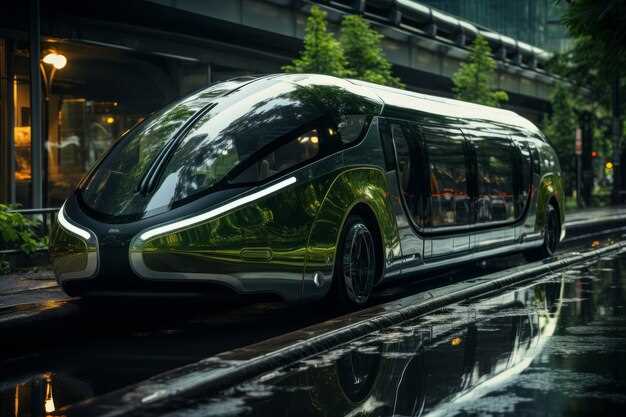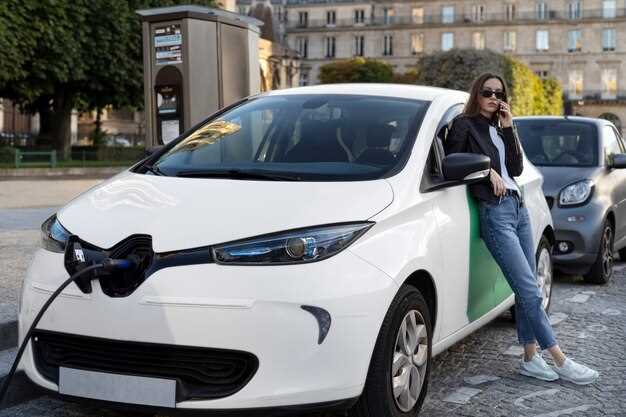
The evolution of urban transportation is undergoing a profound transformation as cities around the world increasingly embrace electric vehicles (EVs). This shift is not merely a trend; it is tightly interwoven with the principles of sustainability and environmental responsibility. As metropolitan areas grapple with challenges such as air pollution, traffic congestion, and climate change, the integration of electric mobility solutions presents a viable pathway towards eco-friendly urban living.
Electric vehicles are becoming more prevalent due to their ability to reduce greenhouse gas emissions and lower the dependency on fossil fuels. City planners and policymakers recognize that transitioning to EVs can significantly contribute to enhanced air quality and overall public health. Moreover, the development of supportive infrastructure, such as charging stations and dedicated lanes, complements this transition, enabling a smoother integration of electric vehicles into the existing transportation framework.
As the market for electric vehicles continues to grow, further investment in battery technology, renewable energy sources, and smart grid systems is essential. These advancements not only enhance the performance and range of EVs but also support the broader goal of achieving sustainable urban environments. With ongoing innovations and supportive policies, the future of urban transportation is shifting decisively towards electric, paving the way for cleaner, more efficient city living.
Infrastructure Challenges for Electric Vehicle Adoption in Urban Areas
The growth of electric vehicles (EVs) in urban transportation represents a significant step towards sustainability. However, various infrastructure challenges hinder their widespread adoption in city environments.
One of the primary issues is the availability of charging stations. Urban areas typically suffer from limited space, making it difficult to install adequate charging infrastructure. High-density living conditions often result in residents without access to private charging points, creating reliance on public charging systems that may not be sufficiently developed or evenly distributed.
Additionally, the existing electrical grid in many cities is not fully prepared to handle the increased demand from a growing number of electric vehicles. Upgrading the grid to accommodate this demand requires substantial investment and planning, which can be daunting for city planners and utility companies alike.
Another challenge is ensuring that charging stations are strategically placed in locations that are convenient for users. Poorly located charging points can lead to longer wait times and deter potential electric vehicle buyers, undermining the goal of increasing EV adoption.
Furthermore, the integration of renewable energy sources into the charging infrastructure is crucial for promoting sustainability. Many urban areas still rely heavily on fossil fuels for electricity generation, which diminishes the environmental benefits expected from electric vehicles. Transitioning to a greener energy mix involves overcoming regulatory hurdles and balancing stakeholder interests.
Lastly, public awareness and education surrounding electric vehicles and their charging infrastructure play a pivotal role in adoption. Misconceptions about the efficacy, convenience, and benefits of EVs must be addressed through comprehensive outreach programs to encourage a shift towards electric transportation.
Economic Impact of Electric Buses on City Public Transport Systems

The adoption of electric buses in city public transport systems is rapidly transforming urban mobility and has significant economic implications. These vehicles offer a sustainable alternative to traditional diesel buses, reducing operating costs and enhancing overall efficiency.
One of the primary economic benefits of electric buses is the reduction in fuel expenses. Electric vehicles (EVs) are generally cheaper to operate than their fossil fuel counterparts, owing to lower electricity costs compared to diesel. This difference can lead to substantial savings for public transport authorities, enabling them to allocate funds to other essential services.
Furthermore, electric buses contribute to decreased maintenance costs. The simpler mechanics of electric drivetrains reduce wear on parts compared to internal combustion engines, resulting in fewer repairs and longer vehicle lifespans. This durability means lower budget expenditures over time, improving the financial sustainability of public transport systems.
Additionally, the initial investment in electric bus infrastructure, including charging stations and technology upgrades, stimulates local economies. The construction and maintenance of such infrastructure create jobs, which can also lead to increased local spending. As cities shift towards electric vehicles, investment in green technologies may also attract businesses focused on sustainability, further enhancing economic growth.
Moreover, electric buses can lead to indirect economic benefits through enhanced urban air quality and public health. Reduced emissions result in lower healthcare costs associated with air pollution. Improved public health increases productivity and reduces absenteeism, leading to a more prosperous workforce.
In conclusion, the economic impact of electric buses on city public transport systems is multifaceted, encompassing direct savings and broader community benefits. By investing in sustainable transportation solutions, cities can pave the way for a healthier environment and a more robust economy.
Evaluating the Environmental Benefits of Electric Taxis in City Logistics

The rise of electric taxis represents a significant advancement in urban transportation, contributing to the overall sustainability of city logistics. By replacing traditional internal combustion engine vehicles, electric taxis drastically reduce emissions, leading to improved air quality in metropolitan areas. This shift is crucial, as many cities struggle with high levels of air pollution which adversely affect public health.
Electric vehicles (EVs) produce zero tailpipe emissions, making them a cleaner alternative for urban environments. This characteristic is vital, especially in densely populated areas where congestion often exacerbates pollution levels. Additionally, the use of renewable energy sources to charge electric taxis can further enhance their environmental benefits, promoting a shift towards a more sustainable energy grid.
Furthermore, electric taxis contribute to noise reduction in city logistics. Traditional vehicles are a significant source of urban noise pollution, impacting the quality of life for residents. Electric taxis operate more quietly, which can result in a more pleasant urban environment, encouraging walking and cycling.
Implementing electric taxis also supports the transition to sustainable transport systems. With the integration of smart technology, these vehicles can optimize routes, reduce energy consumption, and lower operational costs. This efficiency not only benefits taxi operators but also enhances the overall efficiency of city logistics.
Ultimately, the environmental benefits of electric taxis extend beyond immediate emissions reductions. They promote sustainable urban development, encourage investments in clean technology, and pave the way for future advancements in the transportation sector. As cities continue to grow, embracing electric vehicles stands as a critical strategy for achieving long-term sustainability goals.




